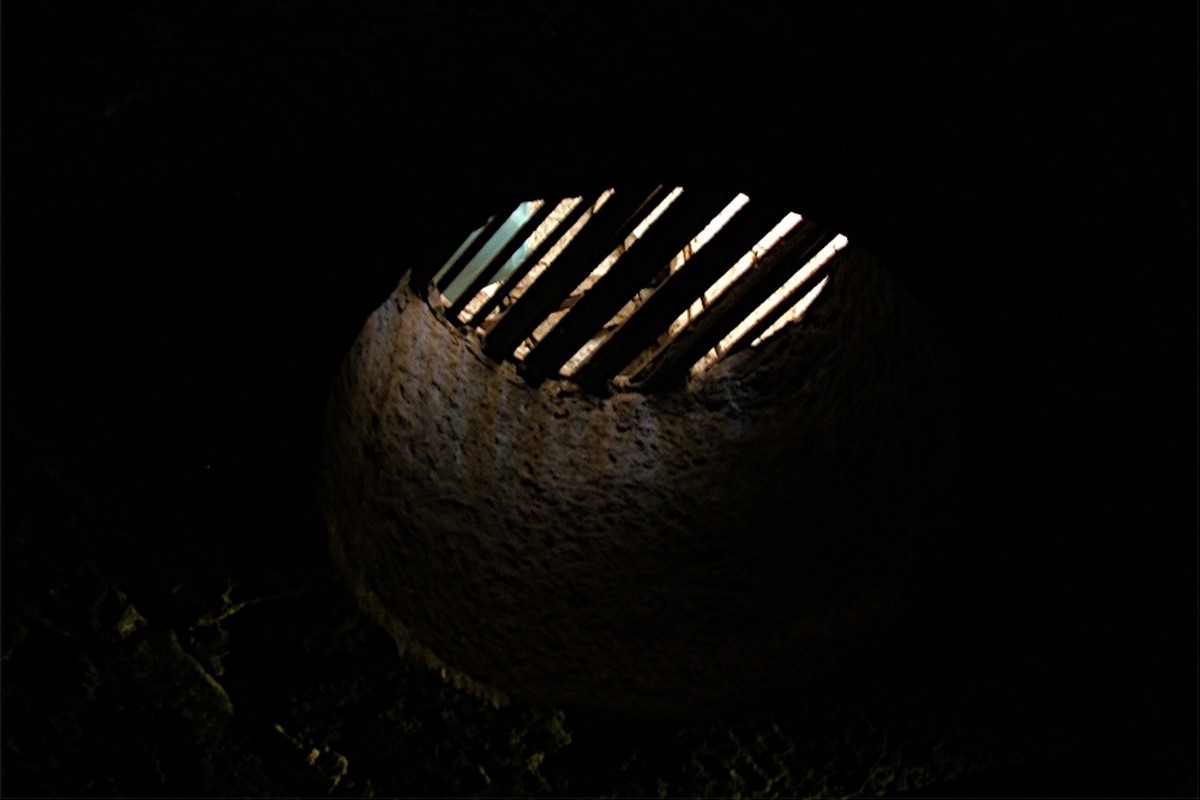
What is an oubliette? An oubliette is a type of dungeon with a single opening at the top, often found in medieval castles. The word comes from the French "oublier," meaning "to forget." These grim chambers were designed to imprison people in a way that made escape nearly impossible. Unlike regular dungeons, oubliettes were typically narrow, vertical shafts, making them even more terrifying. Prisoners were often lowered into these dark pits and left to be forgotten. The design ensured minimal contact with the outside world, adding to the psychological torment. Oubliettes serve as a haunting reminder of the darker aspects of medieval justice.
Key Takeaways:
- Oubliettes were medieval dungeons designed for isolation and despair, often used to imprison political enemies. They continue to inspire modern art and research, shedding light on their dark history.
- These sinister dungeons, called "oubliettes," were designed to make prisoners forgotten, leading to starvation, disease, and psychological trauma. Their historical significance continues to be studied and portrayed in popular culture.
What is an Oubliette?
An oubliette is a type of dungeon with a unique and sinister design. The word "oubliette" comes from the French word "oublier," which means "to forget." These dungeons were specifically designed to imprison people in a way that they would be forgotten. Let's dive into some fascinating facts about oubliettes.
-
Origin of the Name: The term "oubliette" is derived from the French word "oublier," meaning "to forget." This reflects the grim purpose of these dungeons.
-
Design: Oubliettes were typically bottle-shaped, with a narrow opening at the top and a wider chamber below. This design made escape nearly impossible.
-
Location: Often found in medieval castles, oubliettes were hidden away in the deepest, darkest parts of the structure.
-
Purpose: These dungeons were used to imprison individuals who were meant to be forgotten, often political prisoners or enemies of the state.
-
Access: The only way in or out of an oubliette was through a small opening at the top, usually covered by a trapdoor.
Historical Significance of Oubliettes
Oubliettes played a crucial role in medieval history. They were not just prisons but also tools of psychological warfare. Here are some historical facts about oubliettes.
-
Medieval Torture: Oubliettes were sometimes used for torture, with prisoners left in darkness and isolation for extended periods.
-
Political Prisoners: Many political prisoners were thrown into oubliettes to silence them without the need for a public trial.
-
Famous Oubliettes: The Château de Loches in France is famous for its oubliette, which was used to imprison political enemies.
-
Architectural Features: Some oubliettes had spikes or other hazards at the bottom to ensure that prisoners would suffer if they tried to escape.
-
Psychological Impact: The isolation and darkness of an oubliette could drive prisoners to madness, making it a form of psychological torture.
Oubliettes in Popular Culture
Oubliettes have captured the imagination of writers, filmmakers, and game designers. They often appear in stories as symbols of cruelty and despair. Let's look at how oubliettes have been portrayed in popular culture.
-
Literature: Oubliettes appear in various works of literature, including Victor Hugo's "The Hunchback of Notre-Dame."
-
Movies: The 1986 film "Labyrinth" features an oubliette, adding to the movie's dark and mysterious atmosphere.
-
Video Games: Oubliettes are common in video games, often serving as challenging levels or traps for players.
-
Board Games: Some board games, like "Dungeons & Dragons," include oubliettes as part of their game mechanics.
-
Television: TV shows like "Game of Thrones" have featured oubliettes, highlighting their historical significance and dramatic potential.
Modern Interpretations of Oubliettes
While oubliettes are relics of the past, their concept continues to influence modern design and architecture. Here are some modern interpretations of oubliettes.
-
Escape Rooms: Some escape rooms use oubliette-like designs to create challenging and immersive experiences for participants.
-
Art Installations: Artists have created installations inspired by oubliettes to explore themes of isolation and confinement.
-
Museums: Some museums have recreated oubliettes to educate visitors about medieval history and torture methods.
-
Literary Metaphors: Modern writers use oubliettes as metaphors for psychological states, such as depression or isolation.
-
Architectural Design: Some architects draw inspiration from oubliettes to create unique and thought-provoking spaces.
Myths and Legends Surrounding Oubliettes
Oubliettes have given rise to numerous myths and legends over the centuries. These stories often blend fact and fiction, adding to the mystique of these dungeons.
-
Ghost Stories: Many castles with oubliettes are said to be haunted by the spirits of those who perished within them.
-
Secret Passages: Legends often speak of secret passages leading to oubliettes, used by conspirators to imprison their enemies.
-
Cursed Oubliettes: Some oubliettes are believed to be cursed, bringing misfortune to anyone who enters them.
-
Hidden Treasures: Myths suggest that some oubliettes contain hidden treasures, left behind by prisoners or their captors.
-
Escape Tales: Stories of daring escapes from oubliettes have become legendary, though few are based on historical fact.
The Dark Reality of Oubliettes
While myths and legends add a layer of intrigue, the reality of oubliettes is far darker. These dungeons were places of immense suffering and despair.
-
Starvation: Prisoners in oubliettes often faced starvation, as they were left without food or water for extended periods.
-
Disease: The unsanitary conditions of oubliettes made them breeding grounds for disease.
-
Isolation: The complete isolation of oubliettes could lead to severe psychological trauma for prisoners.
-
Death: Many prisoners never left oubliettes alive, succumbing to the harsh conditions within.
-
Forgotten Souls: The very purpose of an oubliette was to make prisoners forgotten, erasing their existence from history.
Oubliettes in Modern Research
Modern researchers continue to study oubliettes to understand their historical and psychological impact. Here are some recent findings.
-
Archaeological Discoveries: Archaeologists have uncovered oubliettes in various medieval sites, providing new insights into their construction and use.
-
Psychological Studies: Psychologists study the effects of isolation in oubliettes to understand the impact on mental health.
-
Historical Records: Historians have found records detailing the use of oubliettes, shedding light on their role in medieval society.
-
Museum Exhibits: Museums around the world feature exhibits on oubliettes, educating the public about their dark history.
-
Documentaries: Several documentaries have been made about oubliettes, exploring their history and significance.
Final Thoughts on Oubliettes
Oubliettes, those hidden chambers of medieval castles, hold a fascinating yet dark place in history. They weren't just dungeons; they were designed to be places of utter isolation, often forgotten by all but their captors. The word "oubliette" itself comes from the French word "oublier," meaning "to forget." These grim cells were typically accessed through a trapdoor in the ceiling, making escape nearly impossible.
Understanding oubliettes gives us a glimpse into the harsh realities of medieval justice and punishment. They remind us of a time when power and fear ruled, and human rights were a distant concept. While they may no longer exist in modern architecture, their legacy lives on in literature, films, and our collective imagination.
So next time you hear about an oubliette, you'll know it's more than just a spooky word—it's a window into a brutal past.
Frequently Asked Questions
Was this page helpful?
Our commitment to delivering trustworthy and engaging content is at the heart of what we do. Each fact on our site is contributed by real users like you, bringing a wealth of diverse insights and information. To ensure the highest standards of accuracy and reliability, our dedicated editors meticulously review each submission. This process guarantees that the facts we share are not only fascinating but also credible. Trust in our commitment to quality and authenticity as you explore and learn with us.


